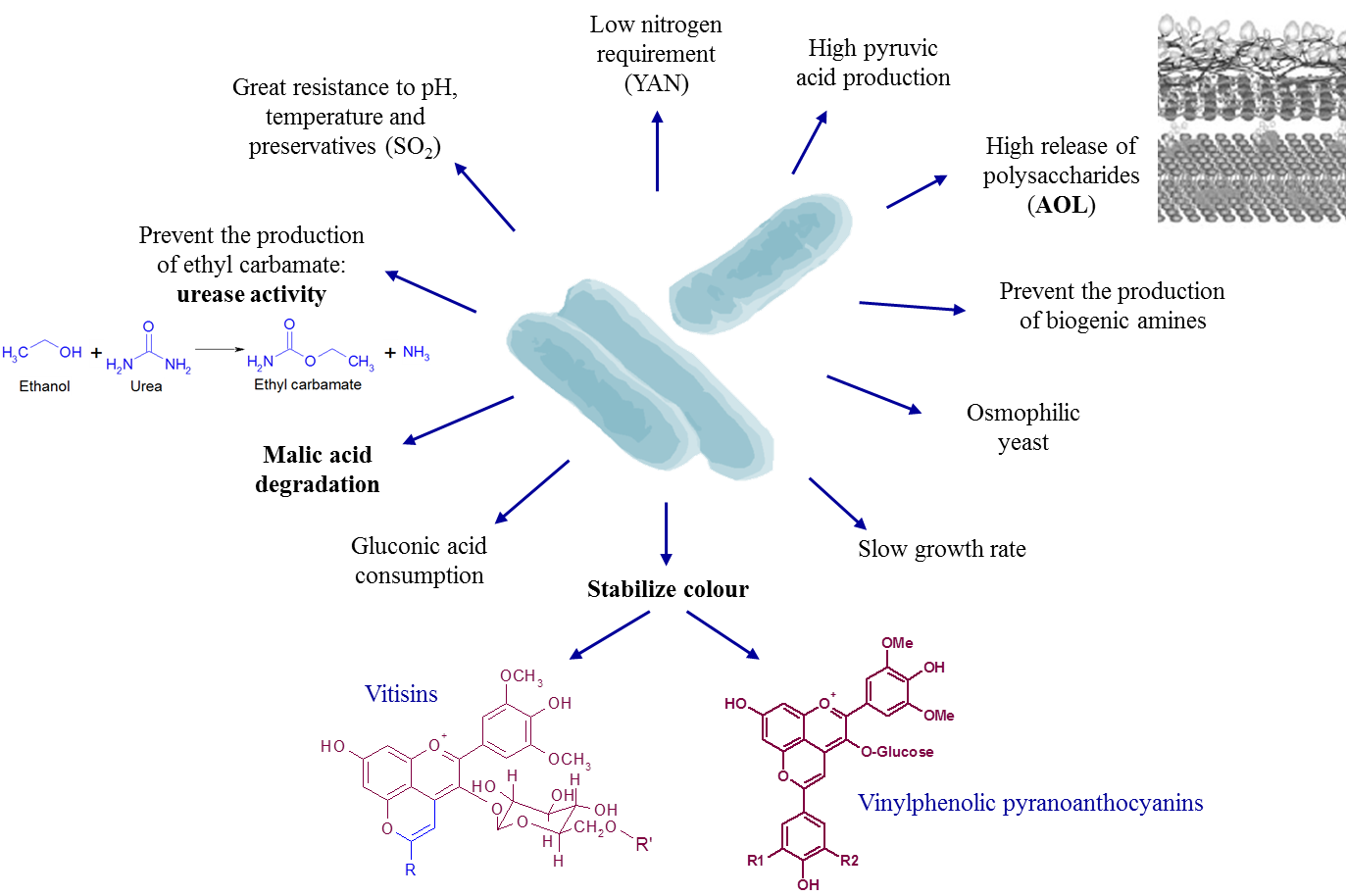There are numerous yeast species related to wine making, particularly non-Saccharomyces, that deserve special attention due to the great potential they have when it comes to making certain changes in the composition of the wine. Among them, Schizosaccharomyces pombe stands out for its particular metabolism that gives it certain abilities such as regulating the acidity of wine through maloalcoholic fermentation. In addition, this species is characterized by favouring the formation of stable pigments in the wine and releasing large quantities of polysaccharides during ageing on lees. Moreover, its urease activity and its competition for malic acid with lactic acid bacteria make it a safety tool by limiting the formation of ethyl carbamate and biogenic amines in wine. However, it also has certain disadvantages such as its low fermentation speed or the development of undesirable flavours and aromas. In this chapter, the main oenological uses of Schizosaccharomyces pombe that have been proposed in the last years will be reviewed and discussed.

